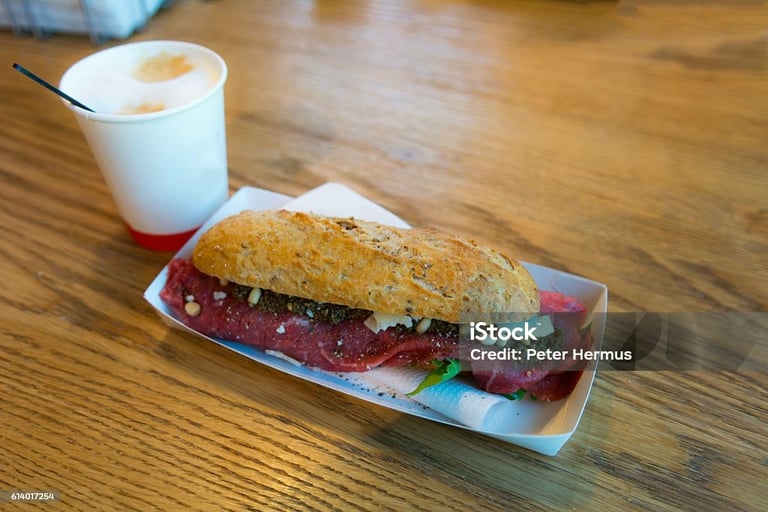Visit Innatefit1.com for exercise wear and equipment!!!
Snack Smarts: The Ultimate Guide to Decoding Misleading Nutrition Labels at Gas Stations
Confused by nutrition labels on gas station food? Discover how to decipher misleading serving sizes, identify hidden sugars, and avoid unhealthy ingredients. Get smart about choosing snacks with our easy guide to understanding the nutrition of gas station food and making healthy choices on the go.
SELF-HELPHEALTHY LIFESTYLEFITNESS TIPSWEIGHT LOSS HEALTHMOTIVATION
Joseph Battle
6/22/20256 min read


Introduction: Why Gas Station Food Nutrition Labels Matter More Than You Think
Next time you dash into a gas station for a quick snack, pause before grabbing that shiny package promising health. Nutrition labels on gas station food often appear straightforward, but they can secretly mislead. Gas station shelves brim with convenience, but convenience sometimes cloaks sugar, salt, and unwanted additives. Most people glance at slogans — “low-fat,” “lite,” or “no added sugar” — and assume these foods are the healthiest options.
However, the reality is more complex. Many processed snacks conceal their true nature behind clever marketing and confusing nutrition labels. Decoding them is crucial, especially because eating on the go shouldn’t mean compromising your health. Today, you’ll learn how to truly understand nutrition labels on gas station food, protect yourself from unhealthy ingredients, and make more intelligent choices every time you fill up and fuel up.
The Truth Behind “Low-Fat” and “Low-Calorie”: What Are You Eating?
Low-fat and low-calorie may not mean healthy. Gas stations often label snacks as “guilt-free” using these buzzwords. But beneath the wholesome image, you might find a different story. “Low-fat” cookies, chips, or bars often increase sugar and sodium levels to maintain flavor. While fat content decreases, the risk of sugar spikes increases. This leads to an energy crash that leaves you hungry again soon after.
Moreover, “low-calorie” tags often appear on artificially sweetened drinks, granola bars, or snacks. These can contain hidden sweeteners or emulsifiers — unpronounceable ingredients meant to mimic volume or taste. When reading the nutrition label, check not only for calories and fats, but also for unusual additives or a high sugar content that seems inconsistent with the “lite” designation of this snack. Marketing can be clever, but you can be smarter by thoroughly examining what you’re really about to eat.
Another trick involves questioning “lite” versions of products. Sometimes, “lite” refers to the intensity of color or flavor, not the reduced caloric content. To avoid falling for these tricks, always look past the flashy front-of-package claims. Reading nutrition labels on gas station food is your superpower in spotting the real deal.
Serving Size Sleight of Hand: How to Interpret Serving Size on Nutrition Labels
Serving sizes on nutrition labels can be misleading. If you glance, you might assume the calories and nutrients shown apply to the whole packet. Yet, gas station snacks often list what appears to be a reasonable number of calories per serving, but pack two, three, or even four servings into one package. If you eat the whole bag (which most people do), the calories, sodium, and fat multiply fast.
For example, a bag of trail mix may say “150 calories per serving,” but list three servings. If you eat the entire bag, you will consume 450 calories. The same applies to trans-fat content in snacks — it may be labeled as “0 grams per serving,” but you consume more if you eat the entire serving.
Portion manipulation is one of the most common ways gas station food nutrition labels trick you into overeating or ignoring unhealthy ingredients. Always check both the serving size and the number of servings per package on the label. Multiply out the amounts for an accurate count of what you’re consuming — and don’t let the snack companies play math games with your health.
Hidden Dangers: Trans Fat Content and How To Spot Hidden Sugars in Gas Station Snacks
Trans fats are some of the worst culprits in processed foods, raising “bad” cholesterol levels and increasing heart disease risk. Even if you see “0g trans fat” on the front of the package, look deeper. If the ingredients list mentions “partially hydrogenated oils,” the snack contains trans fats, even if the amounts per serving are so small that they can be rounded down to zero. Consuming multiple servings can add up, so always look for these oils.
Sugar is another ingredient that loves to hide. Gas station snacks often add sugars to boost flavor in low-fat or low-calorie options. Worse, food labels list over 60 sugar aliases, including corn syrup, dextrose, fructose, maltose, and more. By learning how to spot hidden sugars in gas station snacks, you can avoid sudden energy crashes or long-term health risks.
To reveal these sneaky ingredients, start with the ingredients list, not just the nutrition numbers. The sooner a sugar or oil appears in the ingredient order, the more of it is inside. Remember, “sugar-free” snacks may still contain sugar alcohols, which can cause stomach upset if consumed in large amounts. By arming yourself with knowledge, you can outsmart the unhealthy treats lining every gas station shelf.
Ingredient List Investigation: Unmasking What’s Inside
Reading the ingredient list is like putting on X-ray glasses — you see past the pretty package into the heart of the product. Nutrition labels show you numbers, but the ingredients list tells a story. There, you’ll uncover preservatives, food dyes, thickeners, artificial flavors, and more. Ingredients are listed in descending order of weight, meaning the first few ingredients make up the majority of the product.
Even nutritious-sounding snacks, such as granola bars or trail mix, can contain multiple sugars, oils, and chemical additives like BHT, TBHQ, or propylene glycol — substances rarely found in healthy homemade snacks. Always scan the whole list—the shorter and more familiar the ingredients, the better.
Beware of “health-washed” ingredients as well. A snack may say “made with real fruit” but use fruit juice concentrate — essentially, sugar. Trust your instincts: if the label takes up as much space as your homework assignment, that snack is probably more artificial than natural. Understanding nutrition labels on gas station food means constantly flipping the package over before putting it in your basket.
Spotting Real Food: How to Choose the Healthier Options at Gas Stations
Despite the challenges, it is possible to eat smart at a gas station!
The #1 tip: Choose snacks close to their natural form. Fresh fruit, unsalted nuts, plain popcorn, hard-boiled eggs, or string cheese are far better options than chips, candy, or “energy” bars.
If you must grab a packaged snack, read both the nutrition label and the ingredient list. Look for products with simple, whole ingredients — ideally, things you can pronounce. Skip snacks with long ingredient lists, added sugars, or “partially hydrogenated oils.” Watch for sodium content if you’re worried about blood pressure.
Don’t be fooled by the packaging alone. Marketers use earth-tone colors and nature imagery to create a “healthy halo,” even if the reality behind it tells a different story. When in doubt, opt for water or plain seltzer over sweetened beverages, and choose a banana or apple over crackers or muffins. Over time, your body (and energy levels) will thank you.
Nutrition Label Whodunit: Real-World Case Study of Popular Gas Station Food
Let’s put our new detective skills to use with a few examples.
Trail Mix (Large Bag)
Nutrition label: 170 calories per serving, 3 servings per bag, “0g trans fat,” 8g sugar per serving
Ingredients: Peanuts, raisins, M&Ms, sunflower oil, sugar, partially hydrogenated soybean oil, salt, corn syrup
What’s misleading? If you eat the whole bag, that’s 510 calories, 24g sugar, and trans fats hidden in “partially hydrogenated oils,” even with “0g trans fat” per serving.
Low-Fat Muffin
Nutrition label: 120 calories per serving, 2 servings per muffin, “low-fat”
Ingredients: Enriched flour, sugar, maltodextrin, vegetable oils, eggs, artificial flavor, food dyes
What’s misleading? The whole muffin is 240 calories, and “low-fat” doesn’t mean “low sugar.”
Flavored Iced Tea
Nutrition label: 80 calories per serving, 2.5 servings per bottle, “lightly sweetened”
Ingredients: Water, high fructose corn syrup, sugar, natural flavors, citric acid, caramel color
What’s misleading? Drinking the bottle means swallowing 200 calories and over 40 grams of sugar — not so “light” after all!
These case studies demonstrate the importance of understanding nutrition labels on food sold at gas stations. Always dig deeper than the front-of-package claims, scrutinizing serving sizes, trans fat content, and hidden sugars.
Tips and Tricks: Becoming a Gas Station Label Pro
So, how can you quickly and effectively decode nutrition labels at any gas station? Here’s a step-by-step approach:
Start with the Serving Size: Check the amount per serving and the total servings. Multiply ingredients accordingly for “packet math.”
Scan for Trans Fats: Look for “partially hydrogenated oils” in the ingredients, even if the label claims zero trans fats.
Spot Hidden Sugars: Identify all forms of sugar or syrup, especially those in the top half of the list.
Block Out the Hype: Ignore the marketing and focus on facts - short ingredient lists, whole foods, and reasonable sugar and sodium content.
Stay Hydrated: Opt for unsweetened drinks over those labeled as “flavored,” “sweetened,” or “light” to avoid unexpected sugars.
Practice Makes Perfect: The more you check, the easier it becomes to spot tricks and choose snacks and drinks that keep you feeling your best.
Make these steps a habit — soon, you’ll breeze through gas station stops with confidence and clarity.
Conclusion: Outwitting the Snack Label Sleight-of-Hand
In today’s fast-paced world, gas stations provide tempting snacks everywhere you look. By understanding nutrition labels on gas station food, spotting misleading serving sizes, decoding trans-fat content in snacks, and discovering how to spot hidden sugars in gas station snacks, you’re ready to take charge of your health, no matter how busy your schedule.
Reading between the lines means always going beyond first impressions. With practice, you’ll develop an eye for real food and see through every marketing trick. Whether you’re on a road trip, studying late, or stopping for lunch, staying label-literate means you choose what fuels you best, not just what’s convenient.
So, next time you pull up to the pump, remember: your power comes from knowledge. Let the gas fill your car, but let your next snack fill you up — mind, body, and soul.




